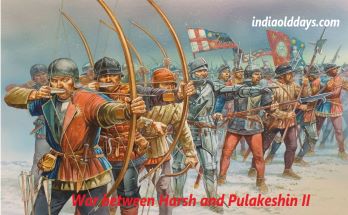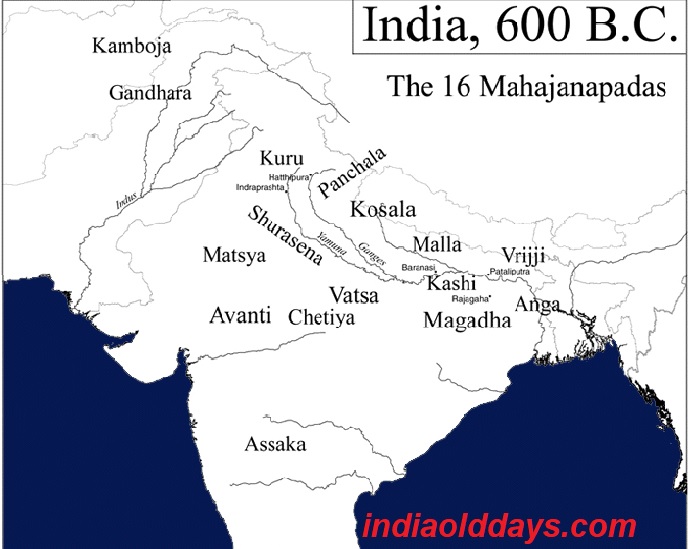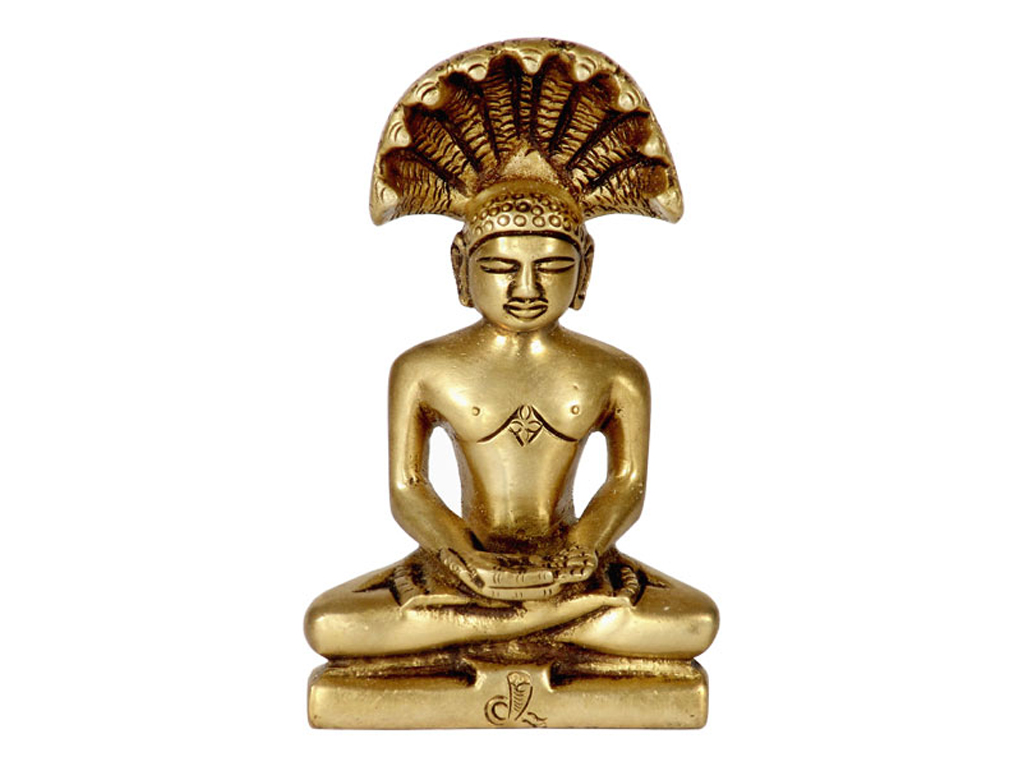Vedic Period (Rigvedic period)
Vedic civilization (1500 BC-600 BC) – After the collapse of the cities and administrative system of the Indus Civilization,Once again the rural civilization emerged in India, whose innovator was Arya and which was named Vedic Civilization. This is the civilization of ancient India. Vedic period remained till 1500 BC to 600 BC.
Due to being Aryan innovator, this civilization was also called Aryan civilization. The main source of information about this period is Vedas, so it is called Vedic civilization or Vedic culture. This civilization was very different from the Indus Valley civilization. It is generally believed that the foreign invaders who destroyed the Harappan cities were the Aryans. Rigveda also mentions this. In the Rig Veda, Indra is called the destroyer of dasa-dasyus(dasyuhan). The Rigveda has also described the Puras of dasa-dasuyas (Harappan people). Indra destroyed these Puras, that is why Indra is called Purandar.
Here the meaning of the word Arya is superior, noble, Abhijatys, Utkrasht, independent and Kuleen.
In the Rigveda, the dasa-dasyus are called Akarmana (non-performer of Vedic rituals), Adevaayu (non-believer of Vedic deities), Ayajvan (non-sacrificial worshiper), Aayavritta (one who follows Vaidiketar fasts), Mridhvaka (one who speaks unfamiliar language) ) And Abrahyan (devoid of reverence and religious belief), Avrata (devoid of fasts).
The Vedic era has been divided into two parts– 1. Rigvedic period (1500-1000 BC) 2. Uttarvedic period (1000-600 BC).

Rigvedic period (1500-1000 BC) – Rigveda gives us knowledge about the history of the Vedic period. Rigveda presents a picture of such a society that was in the Prac Harappan phase. This period was a contemporary of PGW culture. This is a rural culture. There are differences among the scholars in determining the period of the Rigveda. Maxmüller first tried to determine the period of the Vedas. There were no rituals in the Rig Vedic period, whereas in the post-Vedic period Hindu rituals increased the recommendation of rituals. The language of the Aryans was Sanskrit.
According to Maxmuller, Central Asia was the original residence of the Aryans. The civilization established by the Aryans was Vedic civilization and this civilization has also been called a rural culture.
Sources of information on the Rigvedic period –
- Archaeological sources
- Literary sources
Archaeological sources-
- A house of 13 rooms has been found from Bhagvanpura.
- Some places in Punjab – Nagar, Katapalan, Dadhari also got remnants of Vedic period.
- Bogaz Koi inscription (1400 BC) / Mitani inscription – This inscription has been obtained from Syria. In this inscription, a treaty between the Hittite king Subbilimma and the Mithni king Matiuja witnesses 4 Vedic deities – Indra, Mitra, Varuna, Nasatya (Ashwin), (the order of these Vedic deities is likewise on the Bogajkoi inscription.)
- Cassi inscription (1600 BC) – This inscription is obtained from Iraq. In this record, a branch of the Aryans came to Iran while a branch moved towards India.
Literary sources-
- Rigveda– Only Rigveda was composed in this period.
Features of the Rigvedic period-
- Geographic region
- Political system
- Social system
- Economic status
- Religious status
- Craft industry
1 Geographic region-
In the Rig Veda, the word “Sapta Sendhvatah” is mentioned for the Aryans’ residence. There was a confluence of seven rivers in the Sapta Sendhv region where Arya first came and settled.
The names of the seven rivers are
- Sindhu,
- Saraswati,
- Vitasta (Jhelam),
- Ascini (Chenab) (Chandrabhaga),
- Parushani (Iravadi / Ravi),
- Shatudri (Sutlej),
- Vipasa (Vyas).

Brahmavart area – from the river Sutlej to the river Yamuna river. This was an important area of ancient India. It was the central place of the Rigvedic period.
Brahmarshi Desh – Ganga-Yamuna’s Doab.
Bharata Jan resided in the area between Saraswati and Yamuna river.
There is no information of seas in Rigveda. But still, it can be traced by some words like- Paravat (a large amount of water) that the sea was also there. There is no information of Vindhya mountain and Satpura. There is only one area mentioned in Rig Veda and that is – Gandhara – it is famous for the finest wool of sheep. Rigvedic Aryans were also knowledgeable about the names of many mountains- Himanant (Himalayas), Mujwant (Hindukush) – A plant named Som was obtained from here, Arjik, Sushom, Sharmanavat, Shilamant. Rigveda mentioned 42 rivers but names of only 19 Rivers are found.
Saraswati river –
Saraswati river is considered to be the most sacred river. The Vedic Mantras were composed on its shore. It is said to be the first at all rivers, mother of rivers, and the Goddess of voice, wit, and music. This river is also called Nadittama. This river is such a wonderful river which appears in one place and disappears at another place.
Indus river –
The second major river of Rigveda. It also has some other names like Sushoma (originate from Sushom Mountain), Hiranyayni (trading activities was done on this river), Uarnavati (wool was traded through it).
There are 4 tributaries of river Indus which meet East direction from the West direction in river Indus-
- Krumu (Kurram)
- Kubha (Kabul)
- Gomti (Gomal)
- Subastu (swat)
5 Auxiliary rivers of the Indus River which meet in the Indus river in the west direction from the east direction-
- Vitasta (Jhelum)
- Ascini (Chenab) (Chandrabhaga)
- Parushani (Iravadi / Ravi) – Dasaraj war was on the banks of river Parushani.
- Shatudri (Sutlej)
- Vipasa (Vyas) -On the banks of the Vipasa river, Indra shattered the chariot of Usha Devi.
The names of other rivers mentioned in Rig Veda – Drashtvadi, Apaya, Yamuna (mentioned 3 times ), Ganges (mentioned 1 time), Saryu, Raka, Ransi, Anumati, Asuniti.
2. Political system-
In India, Aryans came as separate tribes (people). The Aryans were not a caste or ethnicity, but a linguistic / cultural group. They had different types of struggle after coming to India.
- Arya-Anarya struggle (Dasaraj War)
- Arya-Arya struggle (Das Raj War)
Bharat tribes (Kabbila) was related to Triitsu. Panchjan (Yadu, Anu, Puru, Drhuhu, Turvas).
Life of the Aryans was initially temporary because these people were related to the tribe. Pastoral was their main occupation and Agriculture was secondary occupation. It was considered an inferior duty. Arya considered animals as their property not land.
The smallest unit of administration was family. The head of the family was called the Kulap/Kulpati. Many families formed together with the village. The village head was called Gramani. Rigveda mentioned the word ‘Gramani’ 30 times. Many villages formed together with the Vish, and Vish’s head was called Vishpati. Janasya Gopa(king) was called the head of Jan which was also called the tribe. Janasya Gopa was mentioned 275 times in Rigveda. The King’s position was according to the requirement of war. He had no religious duty/authority. The king was the patron of the tribe. In this period, the king did not hold the title of the emperor.

The royalization of the king / king had no connection with politics in religion. In this period the king was like an ordinary head. The people of the tribe voluntarily gave the tax named Bali. The tax was not compulsory or permanent. The treasury was empty. There was no permanent army and not a permanent administrative officer. The professional bureaucracy was not developed due to the lack of fixed tax administration. The monarchy was the popular form of rule in this period. However, some Ganas are also mentioned. Rigveda mentioned Gana 46 times.
Bali(Sacrifice): taxes on daily consumption items, milk, curd, fruits, flowers, grains, pulses, wool, etc.
3. Social system-
The society of the Rigvedic period was a tribal society. This was a patriarchal society. It was a temporary society based on animal husbandry. Being a patriarchal society, it was a society suited to the need of animal husbandry and war. The condition of women was also good. In society, there was no prevalence of child marriage, Sati-Pratha, widow system, Pardapratha, Jawhar custom, etc.
In society, the practice of widow marriage, inter-caste marriage, Swayamver, Upanayan rituals, etc. reflects the better condition of women. Polygamy in men and Niyog Pratha was in practice. Although marriage in inter-relation and Polyandry is mentioned in the exception form, it was in the form of relics of elements of primitive tribal society. Society was of two types Vegetarian and non-vegetarian. The guest was used to felicitated and the cow’s meat was fed to them. The cow was important in the Vedic society, so most of the events of life were associated with the name of the cow. Like – to the king (Gopati, Gopta), wealthy person (Dravin, Shwewan), measure of time (Godhuli Bella), measure of distance (Gavyetu), daughter (Duhita), guest (Gohan), war (Gavisti /Gesu /Gamya /Gatya), etc. were on the names of the cow.
The caste(class) system was established in the last phase of this period.
For the first time, the name of all four castes is found in the 10th Division of Purush Sukta. Rigveda mentioned for the first time the name of both Vaishya and Shudra.
In this period the caste system was based on karma. There was flexibility. Like – Vishwamitra was the first Kshatriya who later became a priest. There were three castes of the Aryans in the society and in the Rigvedic period the society was based on karma.
In this way, we can say that there was a society based on the deeds of the priest, Rajanya and Vish.
Reference : https://www.indiaolddays.com/





